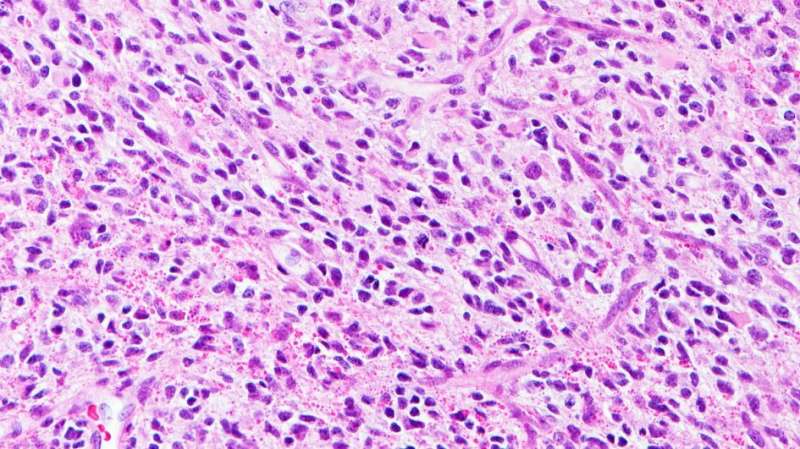Infant high-grade glioma. Credit: David Ellison, St. Jude Children’s Research Hospital
MicroRNA-10b (miR-10b) is a regulatory molecule that is silenced in normal cells of the brain but becomes abundant in more than 90 percent of high-grade gliomas. Glioblastomas (GBM) — the highest grade of glioma — appear to be addicted to this microRNA: without it, cancer cells die. In a new study, Brigham investigators examined derepression of miR-10b to uncover the mechanism by which the microRNA gets turned back on in GBM.
The researchers found that miR-10b as well as several HOXD genes were commonly activated in gliomas, despite a lack of locus amplification or common mutations. The team performed a detailed epigenetic analysis of normal and cancer cells and tissues and found a new mechanism that involves topologic reorganization of chromatin and implicates two long-non-coding RNAs. One of these molecules, an enhancer RNA, was sufficient to turn miR-10b and multiple HOXD genes back on to promote cancer growth; inactivating the molecule in glioma cells reduced glioma viability.
"Our work provides new insights into the question of glioma origin," said corresponding author Anna Krichevsky, Ph.D., of the Department of Neurology. "Our study identifies a new regulatory layer that may drive the genesis of high-grade gliomas, implies the unique vulnerability of tumor-initiating cells and points to new RNA- targeted strategies for glioma therapy."
The study is published in Molecular Cell.
More information: Anna M. Krichevsky, Promoter and enhancer RNAs regulate chromatin reorganization and activation of miR-10b/HOXD locus, and neoplastic transformation in glioma, Molecular Cell (2022). DOI: 10.1016/j.molcel.2022.03.018. www.cell.com/molecular-cell/fu … 1097-2765(22)00256-8
Journal information: Molecular Cell
Provided by Brigham and Women's Hospital























